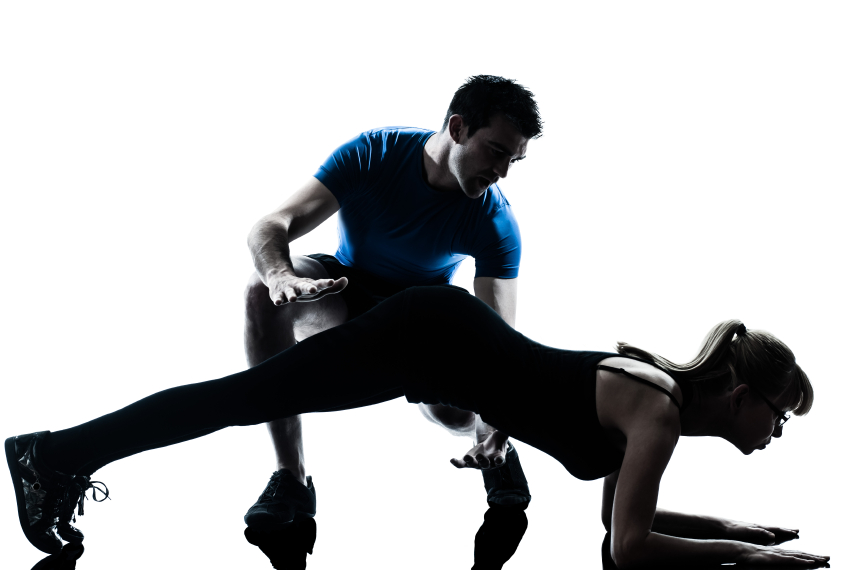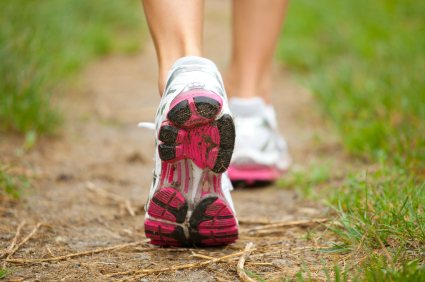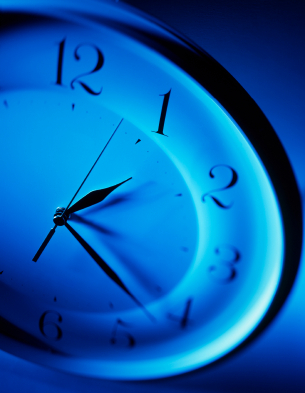Male or female – when it comes to working out, silence is golden
 Silence is golden, at least it is when it comes to choosing your workout partner.
Silence is golden, at least it is when it comes to choosing your workout partner.
I write a lot about the importance of physical activity and this seemed to be the perfect post to kick off Women’s Health Week.
Data have suggested that an optimal workout partner can actually improve both the intensity and duration of exercise by as much as 208%. Indeed, according to Brendan Irwin, an assistant professor of kinesiology at Kansas State University, having a skilled workout partner who keeps verbal encouragement to a minimum is the key to optimizing workouts. Hmm, a skilled person. This idea builds upon behavioral research theory that suggests that the presence of a superior partner may improve motivation in the ‘weak link,’ especially when both people are on a team together. But in addition to the weak link-superior workout partner theory (which I find especially fascinating) is that I would expect that encouragement would be a motivator, not a detractor.
Irwin and his colleagues at Michigan State University asked 115 male and female students (on average, 20 years old) to perform a series of five abdominal planks (holding each as long as they could) after watching a brief instructional video. For those unfamiliar with planks, they are body-weight resistance exercises in which one ‘suspends’ his or her body weight using abdominal muscles. Generally, planks are isometric, require little coordination and are effort-based. They are also quite difficult to hold for any significant period of time. (My best time, for example, is 1 min 40 seconds and my worse, 15 seconds.) For a ‘variation on a theme,’ the differences between the five planks were subtle, e.g. holding a push up position on one’s forearms on each side, etc. Next, the students were divided into three groups:
- The first rested for 10 minutes.
- The second group were told that they would be exercising with a partner (on video at another location) who they met briefly via a Skype call (in reality, that person was ‘in on the research’ and the exercise portion of the session had been pre-recorded). They were informed that the partner was slightly better (skill wise) than themselves.
- The third group was told that they would be exercising with a partner who would encourage them (and, due to technical difficulties, only the partner would be able to communicate).
Irwin says that at first, he and his colleagues thought that it made the most sense that encouragement from a workout partner would be motivating. However, what they found was the opposite: “when exercising with someone who is slightly better [i.e. about 40%] and who is not verbally encouraging, participants exercised longer than if the conditions were the same but that person was verbally encouraging them.” That is, even after controlling for individual differences in strength, exercising with a partner who was more skilled boosted persistence by an average of 78%, and the optimal partner – more skilled and who kept the rah-rahs to a minimum translated into a longer bouts of exercise. Perception is key; Irwin explained that those people who received encouragement from a more skilled partner may have interpreted the comments as condescending or patronizing.
However, will this hypothesis work on older individuals as well? When I asked Professor Irwin this question directly, he said that to the best of his knowledge, ” there is no empirical reason to believe that the results of this study wouldn’t apply to a wide range of age groups. In fact, anecdotally, I hear from faculty and middle-age folks all the time who read about this study (and others like it) and are quick to validate that a partner can be very motivating for them (e.g., “I play tennis with a friend who is a little better than me and it really gets me going!”).”
What about you? What type of person motivates you the best to surpass your own expectations?
[Professor Irwin’s study — “You Can Do It: the Efficacy of Encouragement in Motivating the Weak Link to Exercise Longer During an Online Exercise Video Game,” is slated for publication in the Journal of Medical Interent Research]
Read More
Newsflash! Lose the fat. Then break the fast!
I’m kicking this week off with a piece of provocative news: UK researchers are reporting that the best way to win the battle of the bulge and lose fat is to exercise on an empty stomach.
Mind you, the study (which appears in the online in the British Journal of Nutrition) is small. But, researchers say that by omitting breakfast before exercise, you might be more inclined to eat a more optimal balance of food throughout the day. In fact, when twelve physically active men participated in one of four scenarios — rest without breakfast, exercise without breakfast, breakfast followed by rest, or breakfast followed by exercise –that is actually what they found.
A bit of detail is in order here:
Men who exercised had a moderately intense run on a treadmill, during which time they expended approximately 700 calories. (Note that for the men assigned rest, an equivalent time was spent resting as on the treadmill). After exercising or resting, all the groups had a protein drink comprising approximately 444 calories. Ninety minutes later, they had lunch (pasta) and advised to eat as much as they wanted until they felt comfortably full. Then, the researchers measured energy and fat levels in the blood.
Interestingly, exercising in the morning (around 10 am) appeared to help balance out the day in terms of food and no attempts appeared to be made to compensate for the earlier activity in terms of caloric intake; appetite was also unaffected. But, here’s the critical piece: exercising in a fasted state appeared to increase the amount of fat burned by as much as 20%. And, while eating breakfast appeared to improve overall appetite throughout the day (helping to insure that it remained more balanced and did not lead to additional consumption), it tended to cancel out any appetite-suppressive benefits offered by exercise.
The bottom line is that by fasting before exercising, you may be able to accelerate fat loss. The question remains as to whether or not the same results can found in women and among larger numbers of individuals. And if these fat loss remains over time.
I’d love to hear from some RDs and fitness folks out there. What do you think?
Read More
Exercise and sleep. Sleep and exercise. Does it? Or doesn’t it?
Among the many repeated themes on Flashfree, exercise and sleep rank highly. After all, exercise and physical activity are musts for women as they age. And sleep? Well, that goes without saying. However, although study findings have been fairly consistent with regard to connecting regular or vigorous physical activity to a reduction in some menopausal symptoms, the verdict is still out on sleep.
Sleep. Let me tell you; I sure could use some help in that department!
So what’s the latest and greatest? Does it? Or doesn’t it? Well, a study reported last month in the early online edition of Maturitas journal suggests that it might. The researchers write that studies that have evaluated the effects of aerobic activity on sleep are few and far between, and the results, contradictory. Still, they examined what would happen if they took a group of 176 sedentary women between the ages of 43 and 63 and subjected them to aerobic exercise training for six months. The exercise that half the women were asked to do consisted of 50 minutes of walking (or nordic walking with sticks) for two sessions and other aerobic activity for two sessions per week. The degree of the exercise was moderate, corresponding to about 64% to 80% of their target heart rates. The other half of the group remained sedentary. But both were asked to report via mobile phones how much hot flashes disrupted their sleep, and how much they slept every day on a scale of 1 to 5 (5=good, 1=poor).
The findings were pretty favourable. Women who exercised for 6 months experienced a 2% improvement in sleep quality compared to the women who didn’t (whose sleep quality, incidentally, declined by a half percent). Moreover, the exercise group, who had reported having hot flashes disturbing their sleep changed their tune by six to 10 weeks after starting their four times weekly routines and reported significantly fewer episodes than their sedentary peers.
Some may question that methods used to collect information; for example, studies that rely on recall are often called into question for accuracy and mobile phone data collection is uncommon. Still, the study was longer that most and the researchers validated their findings by scientific methods. That aside, since many readers come here to read the bottom line, is that regular exercise may improve sleep. It definitely affects quality of life and has a positive emotional benefit. Whether or not a 2% improvement is enough is really subjective. For me? I am happy to sleep through the night these days!
Read MoreMove it to lose it
 I mean it! New research suggests that if you want to hit that fatigue, depression, flashes and mood swings in one fell swoop, you may not have to resort to HRT. And the solution may be relatively simple: move.
I mean it! New research suggests that if you want to hit that fatigue, depression, flashes and mood swings in one fell swoop, you may not have to resort to HRT. And the solution may be relatively simple: move.
I can’t stress the importance of physical activity as we age enough. From bone health to heart health to mental health, it is the one accessible, equal opportunity strategy, regardless of income or geography. Because even if you don’t have entry to the gym, you can walk, run, bike, step, or engage in other activities that don’t require a membership or a monthly fee.
In face, researchers are reporting that simply engaging in vigorous physical activity, i.e. 7 days of a combination of moderate intensity/intense activities that add up to 3000 MET minutes a week) can significantly decrease menopausal symptoms, in particular fatigue, depression, insomnia and hot flashes. (Activity level is scientifically measured by units known as METs, or metabolic equivalents; vigorous activity is equivalent to 8 METs and moderate activity to 4 METs).
In a study of over 300 women between the ages of 45 and 60, the most active had about 75% lower menopausal symptom scores. Yet, exercising only moderately(e.g. 3 or more days a week of vigorous activity for at least 20 minutes daily or 5 or more days of moderately intense activity for at least 30 minutes a day) can also reduce strong menopausal symptoms, just not to the extent that more intense activity does.
The reasons behind the benefits of physical activity are pretty simple: your endorphins play a role in vasomotor symptoms and low levels are associated with increased release of luteinizing hormone (a hormone produced by the pituitary gland that is involved in ovulation), leading to hot flashes, heart racing, sleepless ness, anxiety and muscle discomfort. By raising your endorphin levels, even in light of declining estrogen, you stand a better chance at placing a roadblock in front of this process. However, this is only part of the story; body composition, mood and how well your themoregulatory system is functioning are also important.
Still, the message is clear: Move it to lose it, “it” being those trouble menopausal symptoms.
Read MoreWhen it comes to exercise, watercress might be the ticket
Watercress and exercise? Who would have thunk that this peppery wonder veg may help to protect against cellular damage that results from high level exercise? Mind you, this initial information comes from a miniscule study of 10 men but it may carry some important information to file for the future.
Watercress is one of the oldest green vegetables known to man and evidently can be traced back to ancient Greece and Persia. But regardless of its history, this salad green is a good source of vitamins C, A, E and K, and is rich in antioxidants, so much so that when ingested, it may help to reduce oxygen free radicals that can cause damage to cells, including those that are generated during extreme, exhaustive exercise (i.e. to the point near fatigue).
In this study, which appears in the British Journal of Nutrition, 10 healthy men in their early 20s ate roughly 3 ounces of fresh watercress in a single sitting for eight weeks. They then got on a treadmill and were tested to exhaustion. Thereafter, they stopped eating watercress for another 8 weeks and repeated the test. Both times, researchers drew blood. In the second half of the study, half the men stopped eating watercress, and half ate the same amount as before with water, rested for two hours and then completed the same exercise test while the other half didn’t eat watercress but did drink water and repeated the test.
The results?
Exercising to exhaustion did induce damage to the men’s DNA. However, eating watercress appeared to reduce the degree and extent of the damage, both in the short and long-term and men who did not eat the watercress in the second half of the study had more DNA damage than those who did. What’s more, watercress did not have an accumulative effect; in fact, eating it just two hours prior to exercise appeared to boost its protective properties.
In a related press release, lead researcher Dr. Mark Fogarty explains that “the increased demand on the body for energy can create a build-up of free radicals which can damage our DNA. What we’ve found is that consuming a relatively small amount of watercress each day can help raise the levels of important antioxidant vitamins which may help protect our bodies, and allow us to enjoy the rewards of keeping fit.”
In fact, watercress is one of the most antioxidant-rich green leafy vegetables available. Its protective effect may be the result of high concentrations of sulfur-containing nutrients known as glucosinolates (which are also found in broccoli, cabbage, brussel sprouts, cauliflower and cabbage) and carotenoids (plant pigments that the body converts to vitamin A that also protect against free radical damage). Watercress is also known to boost the beneficial action of other antioxidants, including beta-carotene, alpha-tocopherol and ascorbic acid.
Clearly, watercress needs to be studied in greater numbers of men and women and in different age groups. In the meantime? Eating watercress can’t hurt and may even help with much needed post-exercise repair.
Read More








